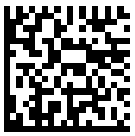Hay Fever was a comical play with a strong message. The actors throughout this play steadily used others to gain their own attention. The message this play left behind after many laughs was do not use others, plain and simple.
The space was a well-constructed thrust stage however, the stage was not...
Check your IELTS writing task 1 and essay, this is a free correction and evaluation service.
Check IELTS Writing it's free


IELTS Writing Answer Sheet
Candidate Name:
vijak.kae
Center Number:
1
2
3
4
Candidate Number:
2
8
0
9
5
Module (shade one box):
Academic:
General Training:
Test Date:
2
D5
D0
M1
M2
Y0
Y2
Y3
YPIE CHARTS DEPICTING PERCENTAGE OF EXPENDITURE FOR THE YEAR 2000 AND 2010
PIE CHARTS DEPICTING PERCENTAGE OF EXPENDITURE FOR THE YEAR 2000 AND 2010 gQJkA
The pie charts depict data for the percentage of expend itu re for various categories for the years 2000 and 2010. From the data shown expenditure changes can be observed and analysed over the decade. There are five categories shown on the pie chart namely travelling, education, restaurants and hotels, footwear and clothing and health expenses respectively.
When we compare and contrast the data for the years 2000 and 2010 we can infer varied things. Firstly the travelling expenses have shown a remarkable 10% growth from 2000 to 2010 which indicates an increase in the standard of living among the general public and it as well serves as great example for the amount of progress achieved. Contrary to modernization and availability of resources have lowered the education expenses showing a 14% drop from 2000 to 2010 as from 34% to 20% making learning in modern times more affordable and economical. The restaurant and hotel expenses have nearly remained the same mere 1% increase from 2000 to 2010. Footwear and clothing expenses have shown a 3% rise from 10% in 2000 to 13% in 2010. However health expenses have remained a constant 15% over the decade.
The pie charts depict data for the percentage of expend
itu
re for various categories for the years 2000 and 2010. From the data shown expenditure changes
can be observed
and analysed
over the decade. There are five categories shown on the pie chart namely
travelling, education, restaurants and hotels, footwear and clothing and health expenses respectively
.
When we compare and contrast the data for the years 2000 and 2010 we can infer varied things. Firstly
the travelling expenses have shown a remarkable 10% growth from 2000 to 2010 which indicates an increase in the standard of living among the general public
and it as well
serves as great example for the amount of progress achieved. Contrary to modernization and availability of resources have lowered the education expenses showing a 14% drop from 2000 to 2010 as from 34% to 20% making learning in modern times more affordable and economical. The restaurant and hotel expenses have nearly
remained the same mere 1% increase from 2000 to 2010. Footwear and clothing expenses have shown a 3% rise from 10% in 2000 to 13% in 2010. However
health expenses have remained a constant 15% over the decade. Do not write below this line
Official use only
CC
5.5
LR
6.5
GR
6.5
TA
5.0
OVERALL BAND SCORE
6.0


IELTS academic PIE CHARTS DEPICTING PERCENTAGE OF EXPENDITURE FOR THE YEAR 2000 AND 2010
👍 High Quality Evaluation | Correction made by newly developed AI |
✅ Check your Writing | Paste/write text, get result |
⭐ Writing Ideas | Free for everyone |
⚡ Comprehensive report | Analysis of your text |
⌛ Instant feedback | Get report in less than a second |
itu
analysed
general public
However
Copy promo code:v6Xz0
CopyRecent posts
- Hay Fever Strong Message Constucted thrust satge
- what kind of skills will be obtained from learning marketing principles?Principles of Marketing is an essential aspect of the business administration world, and I hope I learn everything about it to become a great individual in the business matter. Therefore, by taking this course I will be able to deal with marketing materials and I will be more knowledgeable in terms ...
- SMOKING IN PUBLIC PLACES SHOULD BE BANNED. DISCUSS.I strongly agree that smoking in public places should be restricted and several stringent measures should be taken against those who do so. Smoking in general can create an uncomfortable atmosphere but more so in massive public gatherings. The common sancity of the popular tourist and most admired ...
- Eric Zemmour running for the presidencyOnce again it’s election season in France, seeing President Macron face off against prospective challengers for his position. As Simon Sinek once said, “leadership is not about the next election, it's about the next generation. " And in our lifetime, no candidate has so clearly defined this than Eri...
- Trainers should not work outMany students around the world aim to train or complete their education for further degrees abroad. Some people think that professionals who developed their skills in a particular country should be required to stay there while others have another views I feel that workers should have the liberty to ...
- You applogise your Hotels guest.I hope this letter reaches you, in your best of health. Thank you for your letter of 20 September. I was very saddened by your account of what happened in our hotel last month, and I am writing to express my appologize for this. I can understand that you shocked by the way the receptionist bahaved. ...
- The avoid doning exercise like everybody if so, their weak point would be public which is distributing.Whether mandatory sports provide more effect on people's shape or optional has sparked much debate in recent years. Some people assert that sport should be an essential factor in educational establishment owing to an increase of weight whereas others argue that it is impressive when defines as volun...
- Email regarding the progress of a joint research ProposalHi Daud, Thank you for all your hard work in putting this together. I have made a few changes and added a tiny more on the literature on how entrepreneurial learning. I realize that we have a really short deadline. So this is my list priorities for you look at the numbers in yellow and replace it...
- Letter to Editor of a Magazine to correct the Information.Dear Sir, I am writing this letter to express my concern over the incorrect information that is published in your otherwise esteemed travel magazine. I am Dr. Mohammad Daud, a permanent resident of District Charsadda. I read your travel magazine regularly and always find it thought-provoking to rea...
- I need your guidance and approval for a potential Postdoc pleaseDear Dr. Bettina Becker, I hope this email finds you well. I have visited your profile as the research administrator at Durham business Research Hub has instructed me to write to the relevant host supervisor. I have seen some areas of common interest. Your expertise in Sustainability, Open Innovati...
- To what extent did Stanislavski’s Naturalistic theatre influence modern theatre in Europe?In this thesis, I will assess up to what extent Konstantin Stanislavski’s naturalistic theatre, also known as the ‘System’, has influenced the direction in which modern theatre of the 20th and 21st century in Europe have gone since this system was introduced and implemented in theatrical plays. In o...
- True Friendship can withstand tough timesThe author uses the story to teach readers the theme of a true friendship withstanding the harshest of times. We see this idea first in the story when Bodhi is protecting her. “‘I noticed you were gone and told him that you were in the nurses but didn’t want anyone to know. ’ ‘Thank You. ’ She sighe...
Get more results for topic:
- PIE CHARTS DEPICTING PERCENTAGE OF EXPENDITURE FOR THE YEAR 2000 AND 2010
